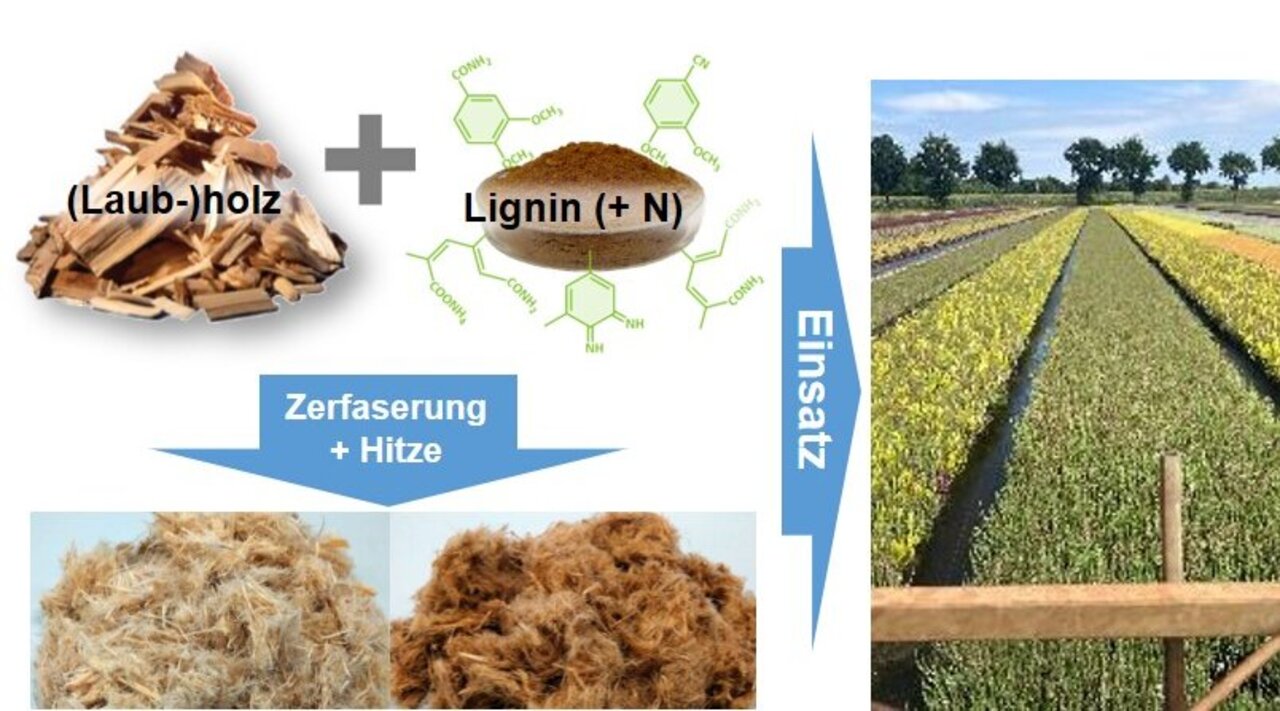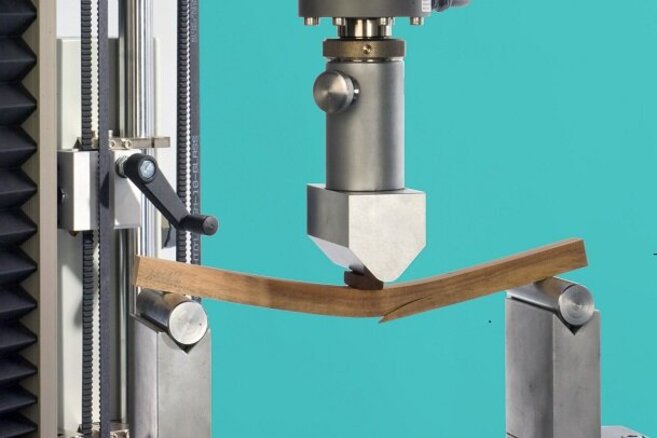Project
Wood Fibers as peat substitutes

Production and use of wood fiber materials as peat substitutes
Reducing peat extraction contributes significantly to climate protection. Wood fiber materials can already be used to replace up to 30% of peat in planting substrates. However, several challenges must be overcome to achieve higher substitution rates. We are exploring approaches to increase the substitution rate and expand the raw material base for wood fiber production.
Background and Objective
The reduction of peat extraction and peat use was identified in the Climate Protection Program 2030 as a suitable measure of climate protection policy, thereby promoting and supporting the protection of peat soils in the long term. GHG potential studies conducted to date have shown a very significant savings potential for the use of wood fiber in planting substrates compared to peat.
Challenges that need to be overcome when using wood fibers include increased microbial degradation of the fibers, which leads to nitrogen immobilization by the microorganisms, so that crop plants can suffer from nitrogen deficiency. Furthermore, the currently predominant use of coniferous wood leads to competing uses, which are likely to be exacerbated in the future by dwindling resources of spruce wood in Germany. On the other hand, there is considerable potential for the utilization of hardwoods, especially of additional tree species which are less important, but will be increasingly available in the future as a result of forest restoration and which are currently used almost exclusively for energy purposes.
The project therefore aims to produce wood fibers with improved resistance to microbial degradation and an increased nitrogen content in order to reduce nitrogen immobilization. In addition, the raw material base is to be expanded from the currently exclusively used coniferous wood to include hardwood and other fiber materials.
Approach
By adding additional lignin, the Thünen Institute for Wood Research aims to produce wood fibers with improved resistance to microbial degradation in order to reduce the resulting nitrogen immobilization. Furthermore, additional nitrogen is to be made available in the plant substrate in the longer term through oxidative accumulation of nitrogen on the lignin. In sum, an improved nitrogen supply for the cultivated plants can be ensured as a result.
To clarify the possible hazard potential of processed wood fibers, substances are also to be identified that are formed in the wood fibers during heating under mechanical stress in the manufacturing process.
At the Julius Kühn Institute Institute for Plant Protection in Horticulture and urban green, the possible applications of the newly developed hardwood fibers are being tested. In a "pre-screening", the by-products and ingredients formed are first evaluated with regard to their phytotoxic effect. In further investigations, a horticultural evaluation of the fibers and extracts as components in soils and substrates will be carried out to test their suitability under cultivation conditions.
In addition, an assessment of the potential greenhouse gas (GHG) reduction contribution from the use of wood fibers from native raw and residual materials to replace peat as a growing medium is being carried out at the Thünen Institute. For this purpose, the GHG impact of the industrial processing of wood into functionally equivalent products is determined by means of standard-compliant life cycle assessments and an estimate is made of the quantifiable GHG reduction potential of possible climate protection measures relating to the topic of peat substitution.
Thünen-Contact

Involved Thünen-Partners
Funding Body
-
Federal Ministry of Agriculture, Food and Regional Identity (BMLEH)
(national, öffentlich)
Duration
9.2022 - 12.2025
More Information
Project status:
finished








